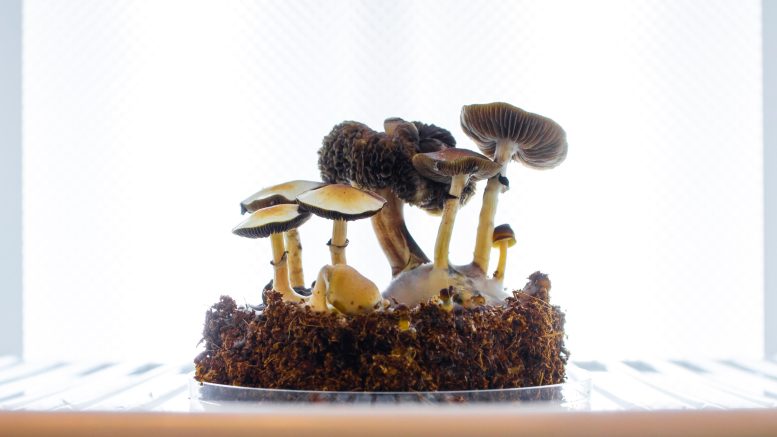
Researchers are seeking to address untested hypotheses about the origin of psychedelic compounds in fungi. Credit: University of Plymouth
New research examines why some fungi evolve psychedelic properties.
Psychedelic compounds found in ‘magic mushrooms’ are increasingly being recognized for their potential to treat important mental health conditions. These include depression, anxiety, compulsive disorders, and addiction.
Psilocybin mushrooms are commonly known as magic mushrooms or shrooms. They are a group of fungi that contain psilocybin which turns into psilocin upon ingestion. Psilocybin is a naturally occurring psychedelic prodrug compound, which means it is a biologically inactive compound that the body converts into a drug.
However, very little is known about how these compounds evolved and what role they play in the natural world.
To address that knowledge gap, scientists from the University of Plymouth are conducting a first-of-its-kind research study using advanced genetic methods and behavioral experiments to address previously untested hypotheses about the origin of psychedelic compounds in fungi.
This includes exploring whether such traits have evolved as a form of defense against fungus-feeding invertebrates, or whether the fungi produce compounds that manipulate insect behavior for their own advantage.
Psilocybin, commonly found in so-called ‘magic mushrooms,’ will be a particular focus for the project. In chemical terms, psilocybin is very similar to serotonin, which is a neurotransmitter involved in the sending of information between nerve cells in animals.
After sampling psychedelic and non-psychedelic fungi, the investigators are using next-generation DNA sequencing to test whether or not there is a diverse animal community feeding on psychedelic fungi.
They are also using laboratory tests to investigate fungal-insect interactions, and whether the fungi undergo genetic changes during attack and development. They will also investigate the effect of psilocybin on the growth of soil bacteria.
The research will also involve using cutting-edge gene editing technology to try and create mutant fungi that cannot synthesize psilocybin. It is hoped this will help researchers better understand the role of a wide range of fungal compounds in the future.
The study is being led by a team of experienced scientists in molecular ecology, animal-plant interactions, and fungal biology in the University’s School of Biological and Marine Sciences. Driving the study are Post-Doctoral Research Fellow Dr. Kirsty Matthews Nicholass, and Research Assistant Ms. Ilona Flis.
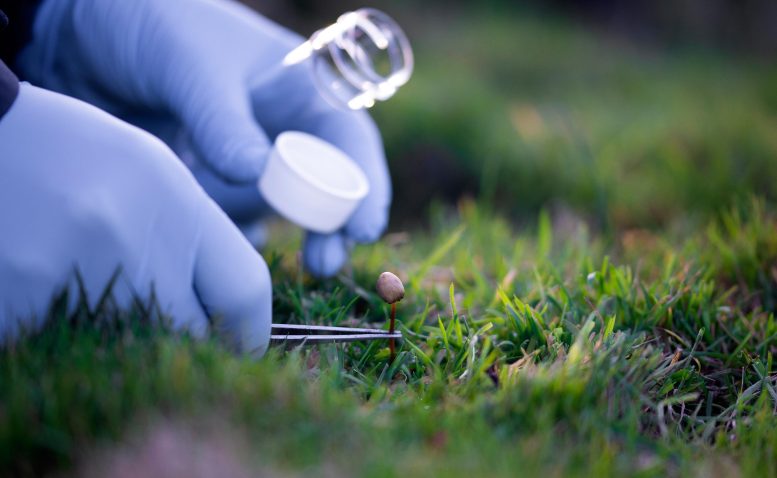
The researchers have sampled psychedelic and non-psychedelic fungi from the wild to explore a range of currently untested hypotheses. Credit: University of Plymouth
Dr. Jon Ellis, Lecturer in Conservation Genetics, is supervising the study. He said: “In recent years, there has been a resurgence of interest in psychedelic compounds from a human health perspective. However, almost nothing is known about the evolution of these compounds in nature and why fungi should contain neurotransmitter-like compounds is unresolved.
“The hypotheses that have been suggested for their evolution have never been formally tested, and that is what makes our project so ambitious and novel. It could also in future lead to exciting future discoveries, as the development of novel compounds that could be used as fungicides, pesticides, pharmaceuticals, and antibiotics is likely to arise from ‘blue-sky’ research investigating fungal defense.”
Dr. Kirsty Matthews Nicholass said: “Within Psilocybe alone, there are close to 150 hallucinogenic species distributed across all continents except Antarctica. Yet, the fungal species in which these ‘magic’ compounds occur are not always closely related. This raises interesting questions regarding the ecological pressures that may be acting to maintain the biosynthesis pathway for psilocybin.”
The research is being funded by the Leverhulme Trust and builds on the University’s long-running expertise in novel elements of conservation genetics.
Researchers involved in this project have previously explored the genetic diversity among UK pollinators, the feeding preferences of slugs and snails, and developed an early warning system for plant disease.
Dr. Jon Ellis talks about the history of research into psychedelic compounds in nature
“Fungi generally receive less attention overall than animals and plants, partly because they are less apparent, people interact with them less and they can be hard to study. Historically, there have also been legal barriers which meant certain research has not previously been possible. Saying that, there were some very interesting studies in the 1940s and 50s into the use of LSD as a psychotherapeutic treatment for alcoholism and obsessive-compulsive disorder. Around that time, people also became interested in fungi from an anthropological perspective.
“One couple, the Wassons, went to Mexico and witnessed the ritual use of fungi for the first time in religious ceremonies. Articles they published brought public attention to psychoactive mushrooms. Around this time, there were also other charismatic individuals, such as Timothy Leary, who advocated the use of LSD more widely by the general public. In the 1960s, psychedelic compounds really came to widespread public attention and that ultimately led to governments introducing new laws to restrict their use.
“For some time, that also restricted the fundamental research that could be carried out. More recently, people have returned to that initial research and found that compounds such as psilocybin can have psychotherapeutic benefits. However, that has not addressed their evolution in nature, which is what makes the research we are doing so exciting.
“I hope our project can change the public perception of magic mushrooms. But beyond that, asking questions about the biological world is a fundamental part of our human nature and this project fits into a long narrative of research asking questions about biodiversity and its evolution.”

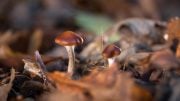
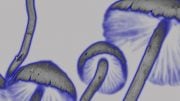


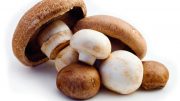
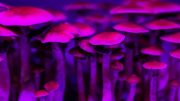

Report the 9th circuit court decision June, 2018, the cause of global warming is not due to the defendants,5 oil companies, but is deforestation which is financed by Pay for Order Flow computers owned by Citadel which pays ADM and other companies vast amounts of money for soybean futures to turn the Amazon into a giant soybean field.Nutmeg Curse tells about how the little ice age was caused by the reverse, the colonists killed 10 million farmers in the Amazon and the jungle grew back, lowering the co2 level to 200 ppm and driving the Vikings out of Greenland.